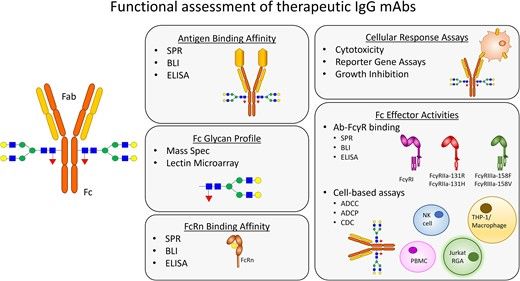
LNP for brain delivery
05.09.2025 00:09 — 👍 1 🔁 0 💬 0 📌 0@ifreecell.bsky.social
Discovery of Next Generation Therapeutics

LNP for brain delivery
05.09.2025 00:09 — 👍 1 🔁 0 💬 0 📌 0
Kraus et al. report absolute miRNA concentrations required for productive cleavage of highly expressed transcripts and identify mouse miRNAs that reach this threshold in vivo.
bit.ly/44cYNvj
Novel drug targets in 2024
www.nature.com/articles/d41...
We developed a robust TDP-43-seeding platform for quantitative assessment of TDP-43 aggregate uptake, cell-to-cell spreading, and loss of function within living cells, while they progress toward pathology.
31.03.2025 12:57 — 👍 0 🔁 0 💬 0 📌 0Reducing off-target effects in siRNA: expert tips for better efficacy eclipsebio.com/eblogs/sirna...
29.03.2025 22:51 — 👍 0 🔁 0 💬 0 📌 0Understanding how the polyA tail interacts with L1 proteins, especially ORF2p, is critical for assessing these risks and developing strategies to enhance the safety of mRNA vaccines. We suggest conducting in vitro experiments to explore polyA tail modifications and their effects on L1 binding.
29.03.2025 16:55 — 👍 0 🔁 0 💬 0 📌 0
Research and Application of RNA Drugs in Kidney Diseases
22.03.2025 02:16 — 👍 2 🔁 0 💬 0 📌 0
#PD: rare loss-of-function variants in ITSN1 increase Parkinson's disease risk by 10-fold—the largest effect size reported to date. This discovery provides new insights into the genetic architecture of PD and potential pathways for therapeutic development. www.cell.com/cell-reports...
08.03.2025 19:09 — 👍 0 🔁 0 💬 0 📌 0
The Krainer laboratory uses multidisciplinary approaches to investigate the fundamental mechanisms and regulation of human pre-mRNA splicing, and the role of defective splicing in cancer and genetic diseases. www.krainerlab.cshl.edu/research
05.03.2025 03:19 — 👍 0 🔁 0 💬 0 📌 0
GPCR drug discovery: new agents, targets and indications www.nature.com/articles/s41...
05.03.2025 03:17 — 👍 0 🔁 0 💬 0 📌 0This paper pushes me to rethink PCR—a routine assay that even a high school student can learn in a day. www.cell.com/molecular-th...
05.03.2025 03:12 — 👍 0 🔁 0 💬 0 📌 0
The first step to use MS Exchange in an organization: servicedesk.msstate.edu/TDClient/45/...
03.03.2025 02:14 — 👍 0 🔁 0 💬 0 📌 0
Mechanisms and comparison of ASOs. The ASOs regulate RNA function through different mechanisms. translationalneurodegeneration.biomedcentral.com/articles/10....
01.03.2025 15:57 — 👍 0 🔁 0 💬 0 📌 0

www.mdpi.com/2076-3425/15... Modeling ALS with Patient-Derived iPSCs
01.03.2025 15:46 — 👍 0 🔁 0 💬 0 📌 0

Functional assessment for therapeutic IgG mAbs academic.oup.com/abt/advance-...
01.03.2025 15:40 — 👍 0 🔁 0 💬 0 📌 0
BBB delivery using extracellular vesicles? www.cell.com/molecular-th...
23.02.2025 15:27 — 👍 0 🔁 0 💬 0 📌 0
Treating neuromuscular diseases: unveiling gene therapy breakthroughs and pioneering future applications jbiomedsci.biomedcentral.com/articles/10....
23.02.2025 15:23 — 👍 0 🔁 0 💬 0 📌 0
"The versatility of CRAAVR cells for the streamlined testing and batch validation of AAVs for research and therapeutic applications."----but cannot be applied to all serotypes, such as AAV4. pubmed.ncbi.nlm.nih.gov/39944269/
22.02.2025 15:34 — 👍 0 🔁 0 💬 0 📌 0
Gut-brain pathways and sites of action of endogenous and exogenous GLP-1 signaling academic.oup.com/endo/article...
22.02.2025 15:04 — 👍 0 🔁 0 💬 0 📌 0
Three sources of myofibroblasts pmc.ncbi.nlm.nih.gov/articles/PMC...
22.02.2025 14:58 — 👍 0 🔁 0 💬 0 📌 0
library preparation protocols used to study distinct RNA species
22.02.2025 13:42 — 👍 0 🔁 0 💬 0 📌 0
Keystone: Drug Delivery to the Brain www.keystonesymposia.org/conferences/...
22.02.2025 00:00 — 👍 0 🔁 0 💬 0 📌 0
Choose a right control for immunofluorescence assay
19.02.2025 16:38 — 👍 0 🔁 0 💬 0 📌 0
massively parallel in vivo Perturb-seq screening www.nature.com/articles/s41...
19.02.2025 02:57 — 👍 0 🔁 0 💬 0 📌 0
Improved workflow for Guide-Seq www.biorxiv.org/content/10.1...
15.02.2025 00:00 — 👍 0 🔁 0 💬 0 📌 0

Therapeutic PCSK9 targeting: Inside versus outside the hepatocyte? pubmed.ncbi.nlm.nih.gov/39947256/
14.02.2025 14:18 — 👍 0 🔁 0 💬 0 📌 0
Protocol overview for single-cell CRISPR screening in mouse brain.
14.02.2025 04:09 — 👍 0 🔁 0 💬 0 📌 0
Fc Gamma Receptor Polymorphisms in Antibody Therapy: Implications for Bioassay Development to Enhance Product Quality academic.oup.com/abt/advance-...
13.02.2025 14:48 — 👍 0 🔁 0 💬 0 📌 0
Great overview from the team of Laura Dassama at Stanford on the state of the art protein-based degraders used for TPD!
pubs.acs.org/doi/10.1021/...

The first clinical results in patients with a genetic form of FTD show that enhancing progranulin in the brain may halt disease progression. If successful, this disease-modifying approach may uncover new avenues for treating other neurodegenerative diseases. www.nature.com/articles/s41...
12.02.2025 21:54 — 👍 1 🔁 0 💬 0 📌 0